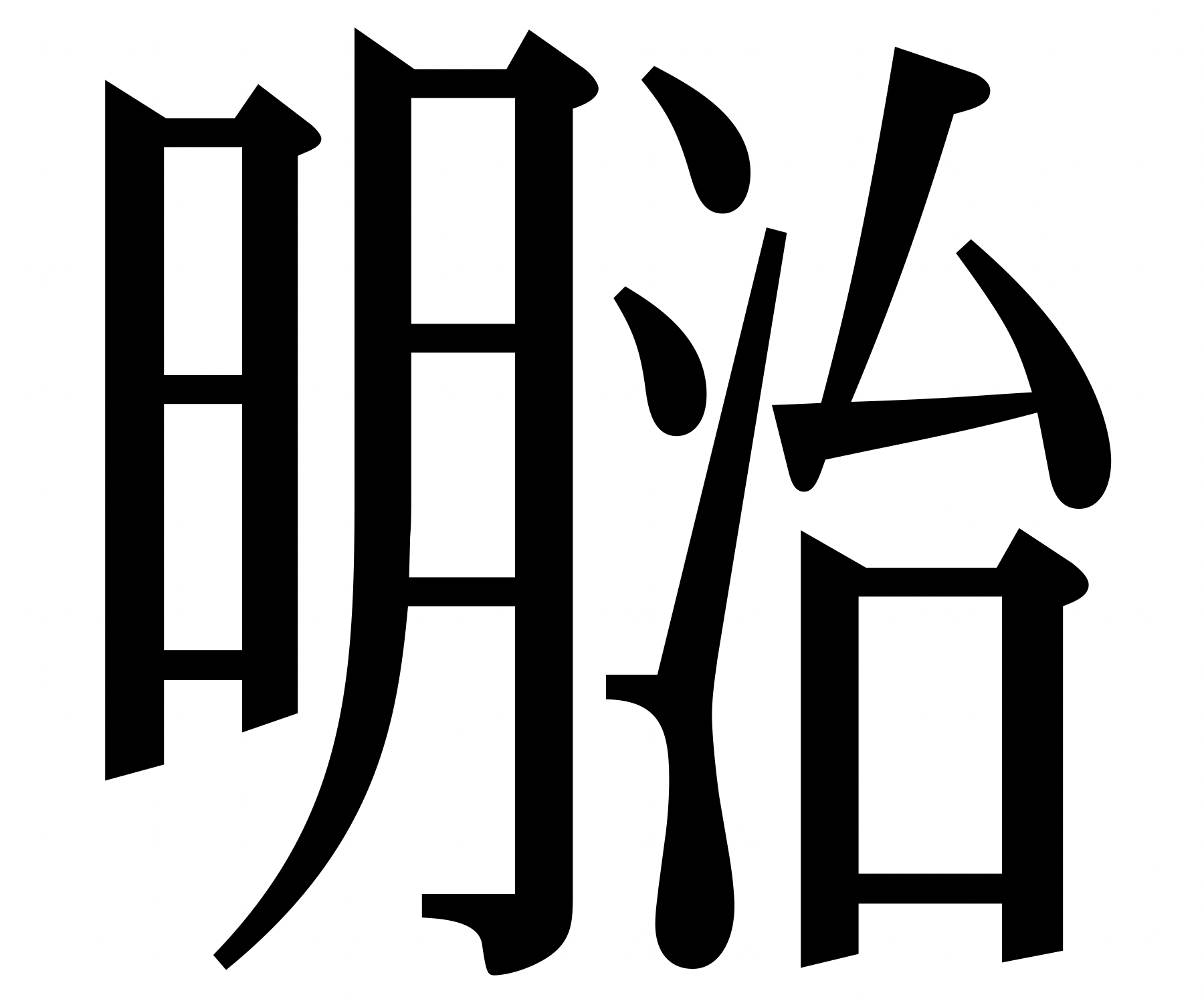
In exactly 10 days, Japan is expected to reveal the name of its next era that will begin on 2019-05-01.
This article will cover several important standards or events that are related to the two-kanji square ligature forms of the current era name, the previous three, and the forthcoming one.
NEC Row 13
The first version of the JIS X 0208 standard was published as JIS C 6226-1978. (As an aside, this standard’s designation was changed from JIS C 6226 to JIS X 0208 on 1987-03-01.)
Shortly after—but definitely before 1983—NEC, as part of JIPS (Japanese Information Processing System or ジップス), added 82 characters to Row 13 (aka NEC Row 13), which was empty in JIS X 0208. A small number of the NEC Row 13 symbols were added to the 1983 revision of the JIS X 0208 standard, but they remained in NEC Row 13. Among the characters in this vendor-specific row were the two-kanji square ligature forms of the Meiji (明治), Taishō (大正), and Shōwa (昭和) era names at positions 13-77 (Shift-JIS 0x878D), 13-78 (Shift-JIS 0x878E), and 13-79 (Shift-JIS 0x878F), respectively: ㍾, ㍽, and ㍼. Note how the ordering is from oldest to newest.

Several companies adopted NEC Row 13 into their own vendor character sets, in particular Apple and Microsoft.
Heisei Era: NEC or Microsoft? Apple’s KanjiTalk7?
The Heisei (平成) era began on 1989-01-08. Because Microsoft adopted NEC Row 13 into its Japanese character set, it is not known whether NEC or Microsoft added the two-kanji square ligature form of 平成 at position 13-63 (Shift-JIS 0x877E): ㍻.

Instead of adjusting their KanjiTalk6 character set, Apple decided to significantly change their extension to JIS X 0208 when they developed their KanjiTalk7 character set, which was released in 1992. The (now) four two-kanji square ligature forms of Japan era names were moved to Row 14 at positions 14-71 (Shift-JIS 0x87E5) through 14-74 (Shift-JIS 0x87E8): ㍾, ㍽, ㍼, and ㍻. Note how the ordering is from oldest to newest.

Unicode
Unicode Version 1.0 was released in October of 1991, and included the four two-kanji square ligature forms of Japan era names at code points U+337B through U+337E: ㍻, ㍼, ㍽, and ㍾. Note how the ordering is from newest to oldest. Interestingly, the “Unicode Preview” included these four characters at code points U+3190 through U+3193, ordered from oldest to newest, and the relevant page is dated 1990-08-11.
Fontworks’ OCF Fonts
Fontworks (フォントワークス) developed OCF (Original Composite Font) fonts in the early 1990s, and they included vertical forms of these two-kanji square ligatures whose component kanji were stacked vertically, as shown below:

This was quite novel, and will become important later.
(Incidentally, their fonts also included vertical forms of full-width Latin, Greek, and Cyrillic whose glyphs were centered along the Y-axis for proper placement in vertical writing mode. This is accomplished in OpenType via 'vmtx' table overrides, which doesn’t require separate glyphs.)
JIS X 0213:2000
When the JIS X 0213 standard was developed, NEC Row 13 in its entirety was incorporated, mainly for compatibility with existing implementations, though the characters that were duplicates of those in the 1983 revision of JIS X 0208 were obviously excluded. The four two-kanji square ligature forms of Japan era names were included using the same NEC Row 13 positions.
Adobe-Japan1-4
Before I dive into Adobe-Japan1-4, I should first state that Supplement 0 of Adobe’s public Japanese glyph set, Adobe-Japan1-0 (1992), included glyphs for ㍾, ㍽, and ㍼ from CIDs 7621 through 7623. These were inherited from Adobe’s original Japanese glyph set that was used for OCF fonts. The glyph for ㍻ was added in Supplement 1, Adobe-Japan1-1 (1993), as CID+8323.
Fontworks’ coining of the vertical forms of the era name square ligatures inspired me to include their glyphs in Supplement 4, Adobe-Japan1-4 (2000-02-21). They were added in the second draft (dated 1999-08-07) as CIDs 11986 through 11989, and their CIDs remained unchanged in the third draft (dated 1999-11-05). Their final CIDs were 12041 through 12044.
Going back to Unicode for a moment, the vertical forms are shown in the Vertical column of Table 2 of UAX #50 (Unicode Vertical text Layout).
2019-04-01 Announcement
As stated at the beginning of this article, Japan is expected to announce the name of its new era on 2019-04-01, and because a precedent has been set to encode its two-kanji square ligature form, Unicode has reserved U+32FF as its code point, which will be standardized in Unicode Version 12.1. The code point selection criteria was based on U+32FF being the closest unassigned code point to the other four similar characters.
Adobe-Japan1-7
Related to the encoding of U+32FF, Supplement 7 of Adobe’s public Japanese glyph set, Adobe-Japan1-7, was defined to include glyphs for the two-kanji square ligature forms of Japan’s new era name, for horizontal and vertical, using CIDs 23058 and 23059. The actual Adobe-Japan1-7 specification cannot be published until the name of the new era is revealed, but its CMap resources were released last year.
JIS X 0213 Revision?
In closing, one point of curiosity for me is whether Japan will bother to revise the JIS X 0213 standard to include the new two-kanji square ligature. When considering the small number of available positions in Plane 1, position 1-13-62 (Shift-JIS 0x877D, though it is no longer very relevant) looks to be the best candidate. It is closest unassigned position to the position that corresponds to U+337B ㍻, which is 1-13-63. The same criteria was used to select U+32FF for the Unicode code point.
